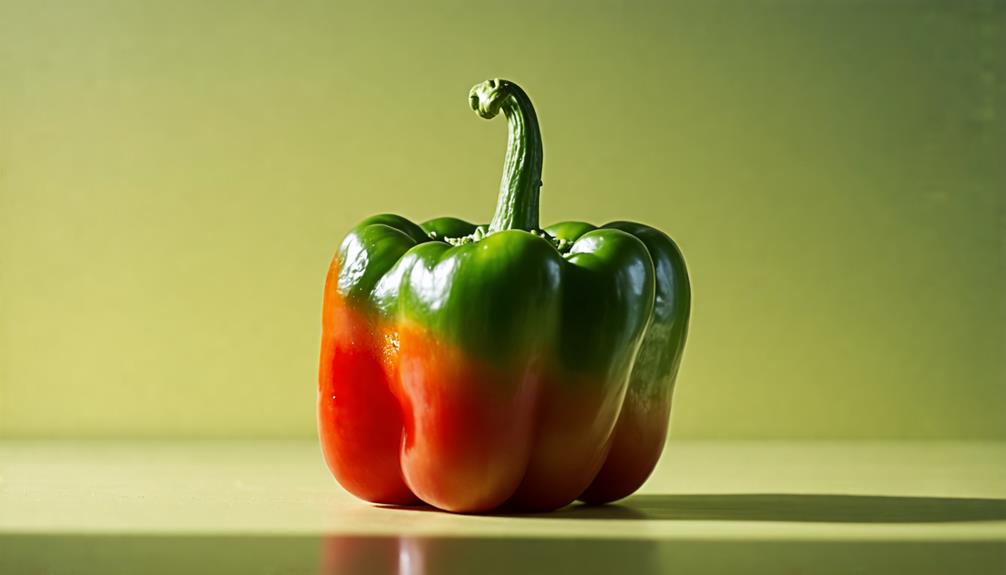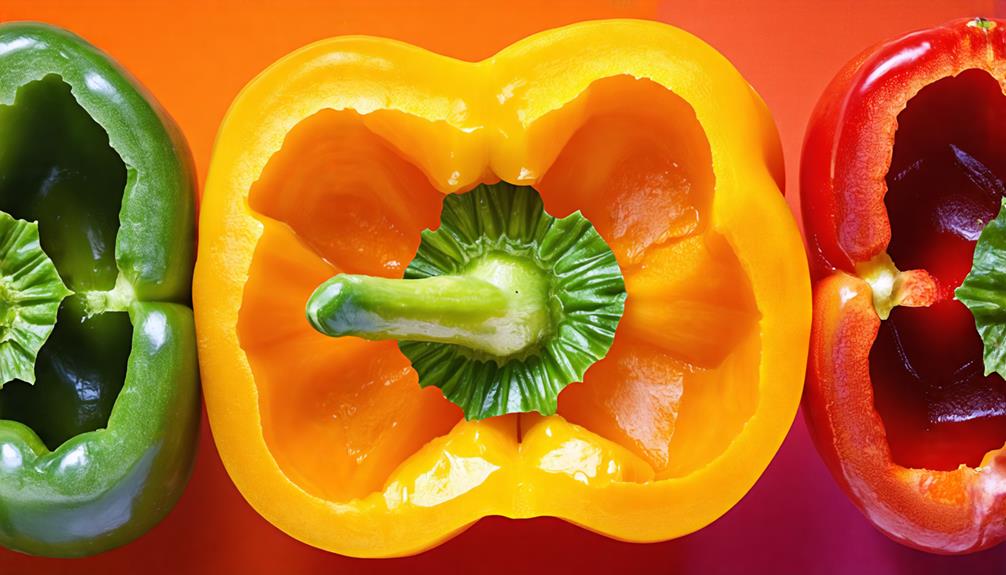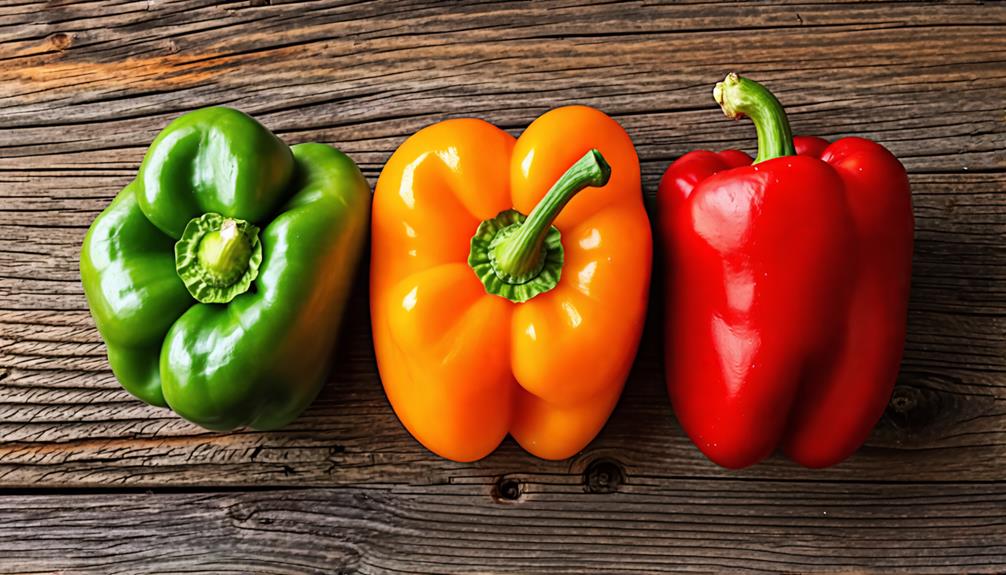You might be surprised to learn that the green bell peppers you've been buying at the grocery store are actually just unripe red peppers. It's true – those crisp, slightly bitter veggies are the same ones that would eventually turn into sweet, vibrant red peppers if left on the plant longer. But there's more to this story than meets the eye. While all green peppers can potentially become red, not all red peppers start out green. The world of bell peppers is more colorful and complex than you might think, and understanding their journey from vine to plate can change how you view and use these versatile vegetables.
Key Takeaways
- Many green bell peppers are unripe versions of red, yellow, or orange peppers.
- Some bell pepper varieties are genetically bred to remain green when fully ripe.
- Ethylene gas triggers color change from green to red, yellow, or orange in ripening peppers.
- Green peppers generally have fewer nutrients than their fully ripened counterparts.
The Ripening Journey

As you explore the journey from green to red, you'll discover that bell peppers undergo a fascinating transformation driven by natural ripening processes. Green bell peppers are the starting point of this ripening journey, representing the unripe stage of mature bell peppers.
As they progress, ethylene gas production increases, triggering a color change from green to vibrant hues like red, yellow, or orange. This process is influenced by temperature and light exposure, which can accelerate the shift to fully ripe colors.
Throughout this journey, you'll notice changes in texture as well. Firm texture indicates ripeness, while a softer feel suggests overripeness.
It's essential to acknowledge that while most bell pepper varieties follow this path, some may remain green due to specific genetics. Understanding these stages helps you identify the perfect moment to enjoy your bell peppers at their peak flavor and nutritional value.
Color-Specific Varieties Exist
While many green bell peppers will indeed turn red as they ripen, you'll find that specific varieties are bred to maintain their green color throughout maturity. These color-specific varieties, such as Permagreen and Staysgreen, challenge the notion that all green bell peppers are unripe versions of red ones.
When growing bell peppers, you'll discover that seed catalogs often classify them by their final color, indicating that green and red peppers can come from different plants.
The diversity of bell peppers extends beyond just green and red. You'll encounter yellow, orange, purple, and even brown varieties, each with unique genetic traits determining their color.
This complexity in bell pepper genetics means that ripeness isn't the sole factor in pepper color. While some green peppers will evolve to red, yellow, or orange, others are specifically bred to remain green when fully mature.
Nutritional Differences Among Colors

Despite their shared origins, bell peppers of different colors offer distinct nutritional profiles, with riper varieties generally containing higher levels of beneficial compounds.
Green peppers, being harvested early, have fewer nutrients compared to their mature counterparts. In contrast, red bell peppers are nutritional powerhouses, boasting three times the Vitamin C of an orange and abundant antioxidants like lycopene, which may help reduce cancer risk.
Yellow and orange bell peppers fall between green and red regarding nutritional content. Yellow bell peppers have slightly fewer vitamins than red ones, while orange peppers are particularly rich in beta-carotene.
As peppers ripen, their health benefits increase considerably. The extended maturation process of red bell peppers makes them the healthiest option overall.
When choosing bell peppers, consider that ripe peppers not only taste sweeter but also provide more nutritional value.
Conclusion
You've learned that green bell peppers are simply unripe red ones, but don't forget that color-specific varieties exist too.
As peppers ripen, they'll change color and nutritional content. You'll find that red peppers pack more nutrients than their green counterparts.
Next time you're shopping, consider how you'll use the peppers. If you want crunch, go green. For sweetness and extra vitamins, choose fully ripe red ones.

Leave a Reply